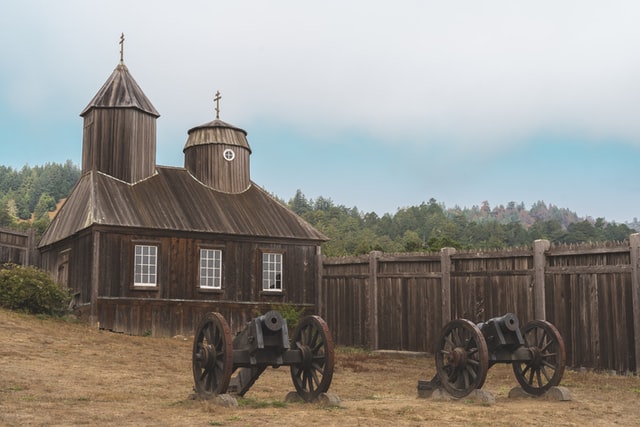Exploring Fort Ross: A Journey Through California’s Russian Past
Perched on the rugged coast of Northern California, Fort Ross is a historic gem that offers a unique glimpse into a lesser-known chapter of the state’s history. Established by Russian settlers in the early 19th century, this former Russian outpost is now a state historic park, preserving the legacy of Russian America and the multicultural interactions that shaped the region.
The Founding of Fort Ross
In 1812, the Russian-American Company established Fort Ross (originally named “Fortress Ross”) as a trading post and agricultural base. Situated about 80 miles north of San Francisco, the fort was part of a broader Russian effort to expand their influence in North America. The site was chosen for its strategic location and its potential for hunting sea otters, whose pelts were highly valuable in the global fur trade.
Fort Ross became a bustling settlement, home to a diverse community of Russians, Native Alaskans, and Native Californians. This multicultural mix contributed to the fort’s unique character and facilitated cultural exchange and cooperation.
Life at Fort Ross
Life at Fort Ross was a blend of Russian, Native Alaskan, and Native Californian cultures. The residents engaged in various activities, including hunting, farming, and trading. The fort’s structures reflected this multicultural influence, with Russian-style buildings and Native American-inspired dwellings.
Key structures within the fort included:
The Rotchev House: The only original building remaining at Fort Ross, the Rotchev House was the residence of the last manager of the Russian-American Company at the fort. Today, it serves as a museum, offering insights into the daily life and activities of the fort’s residents.
The Stockade: The fort’s wooden stockade walls were constructed to protect the settlement from potential threats. Visitors can walk along these walls and imagine the fort’s defenses in the early 19th century.
The Chapel: A replica of the original Russian Orthodox chapel, this building is a testament to the spiritual life of the fort’s inhabitants. It stands as a symbol of the Russian influence on the region.
The Legacy of Fort Ross
Despite its relatively short existence, Fort Ross left a lasting impact on California’s history. The fort was sold to John Sutter in 1841, and the Russian presence in California came to an end. However, the cultural and historical significance of Fort Ross continues to be recognized and celebrated.
Visiting Fort Ross Today
Fort Ross State Historic Park offers visitors the opportunity to explore this fascinating historical site and learn about its rich heritage. Highlights of a visit to Fort Ross include:
Guided Tours: Knowledgeable guides provide insights into the fort’s history, the daily lives of its residents, and the interactions between different cultures.
Museum Exhibits: The park’s visitor center features exhibits that delve into the history of Fort Ross, including artifacts, photographs, and interactive displays.
Cultural Events: Throughout the year, Fort Ross hosts various events and festivals that celebrate Russian, Native Alaskan, and Native Californian cultures. These events offer a chance to experience traditional music, dance, crafts, and cuisine.
Scenic Views: The park’s stunning coastal location provides breathtaking views of the Pacific Ocean. Visitors can enjoy hiking trails, picnicking, and wildlife watching in this picturesque setting.
Preserving History
Fort Ross State Historic Park is dedicated to preserving and sharing the history of this unique site. Ongoing conservation efforts ensure that future generations can continue to learn about and appreciate the diverse heritage of Fort Ross.
Plan Your Visit
Fort Ross is open year-round, with the best weather typically occurring in the spring and fall. For more information on visiting hours, tours, and special events, check out the .
Embark on a journey to Fort Ross and discover the rich tapestry of cultures that have shaped California’s history. It’s a place where the past comes to life, offering a window into the dynamic and interconnected world of the early 19th century.
